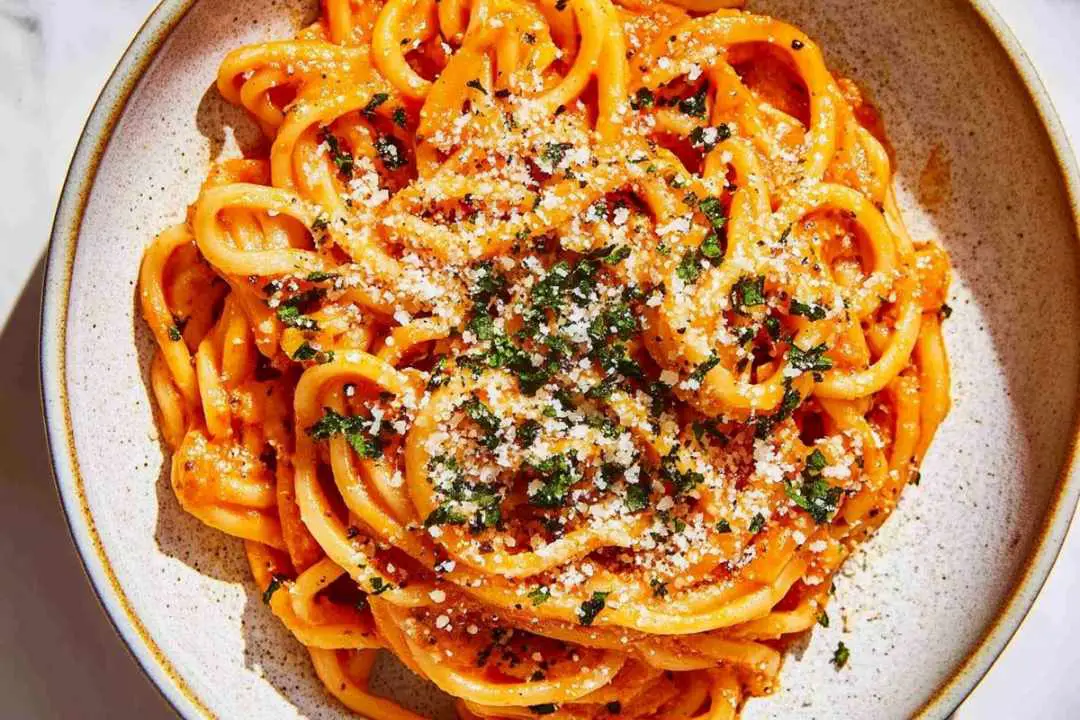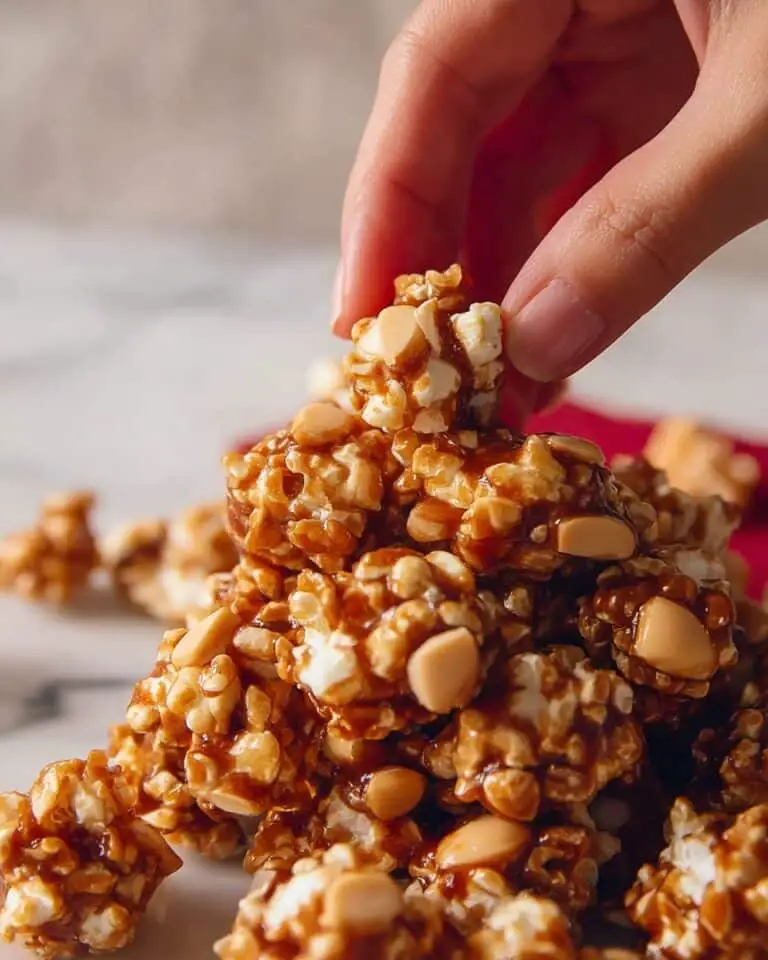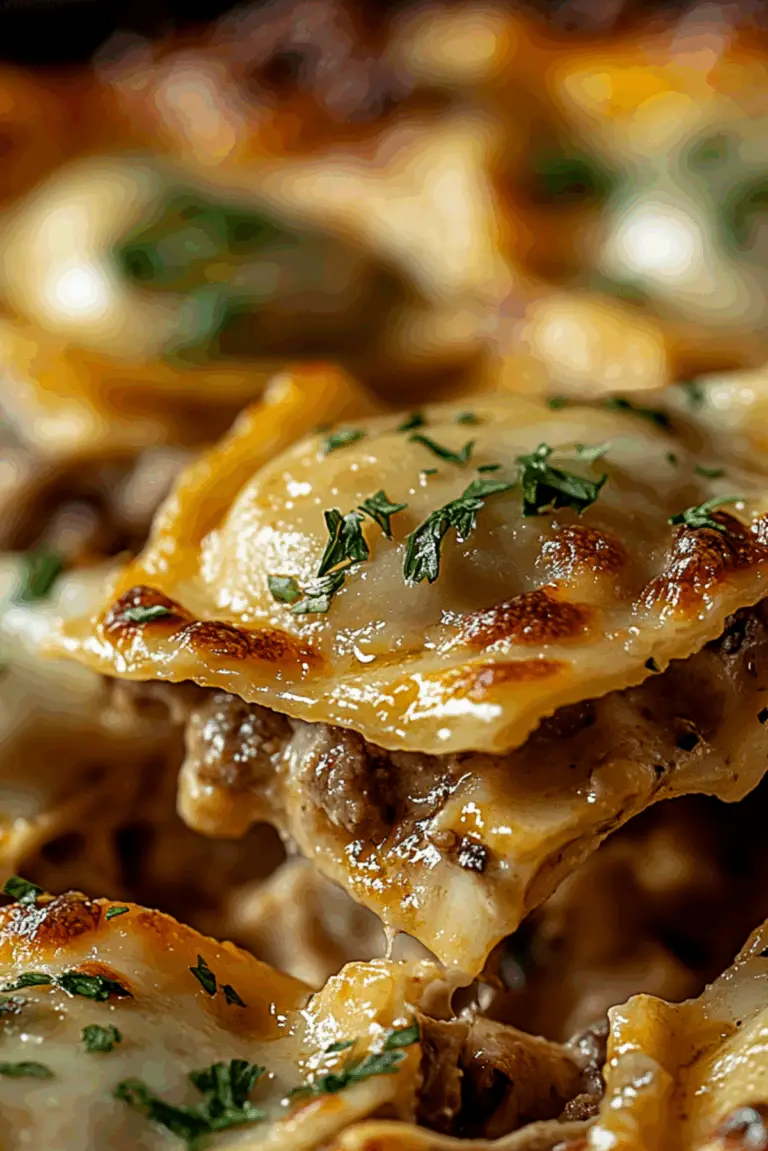Gochujang Noodles
A Spicy and Savory Noodle Dish
If you love bold flavors and quick, satisfying meals, these Gochujang Noodles are a must-try. This dish combines the deep umami of gochujang (Korean chili paste) with a touch of sweetness and a hint of garlic for a perfectly balanced, spicy-saucy bowl of noodles. Ready in under 20 minutes, it’s the ultimate comfort food with a kick!
Why You’ll Love This Recipe?
These noodles are incredibly flavorful and easy to make. The combination of spice, sweetness, and savoriness makes them addictively delicious. Plus, they can be customized with different proteins and vegetables, making them a versatile weeknight staple. With only 10 minutes of prep and 10 minutes of cook time, this is a fast and flavorful dish that will become a favorite.
Ingredient Notes
- Gochujang – This fermented Korean chili paste brings deep, spicy, and slightly sweet flavors to the sauce. Adjust the amount based on your spice preference.
- Soy Sauce – Adds saltiness and umami to balance the spice.
- Sesame Oil – Provides a rich, nutty aroma and enhances the overall flavor.
- Honey or Brown Sugar – A touch of sweetness balances the heat from the gochujang.
- Garlic and Ginger – Essential aromatics that add warmth and depth.
- Rice Vinegar – Gives the sauce a subtle tang and brightness.
- Noodles – Use udon, ramen, or rice noodles for the best texture, but any type of noodles will work.
- Vegetables – Bell peppers, carrots, and bok choy add freshness and crunch.
- Protein (Optional) – Tofu, chicken, or shrimp make great additions for extra heartiness.
Step-by-Step Instructions
1. Cook the Noodles
Bring a pot of water to a boil and cook the noodles according to package instructions. Drain and set aside.
2. Prepare the Sauce
In a small bowl, whisk together gochujang, soy sauce, honey (or brown sugar), rice vinegar, sesame oil, garlic, and ginger. Adjust to taste based on your spice and sweetness preferences.
3. Sauté the Vegetables and Protein
In a large pan or wok, heat a little sesame oil over medium heat. If adding protein, cook it first until fully done, then remove and set aside. Next, add your vegetables and stir-fry for 2-3 minutes until slightly tender.
4. Combine Everything
Add the cooked noodles and sauce to the pan with the vegetables. Toss everything together until well coated. If needed, add a splash of water or noodle cooking water to loosen the sauce. Return the cooked protein to the pan and mix well.
5. Serve and Enjoy
Garnish with sesame seeds, chopped green onions, and a drizzle of extra sesame oil. Serve immediately for the best flavor and texture.
Expert Tips for the Best Gochujang Noodles
- Control the spice level – Start with a small amount of gochujang and add more as needed.
- Use fresh aromatics – Fresh garlic and ginger make a huge difference in depth of flavor.
- Don’t overcook the noodles – Slightly undercooking them before tossing with the sauce helps maintain their texture.
Serving Suggestions
These noodles pair well with a side of kimchi, a crisp cucumber salad, or a soft-boiled egg for extra richness. For a heartier meal, serve alongside Korean BBQ or crispy tofu.
Storage and Reheating Tips
Storing Leftovers
Store leftovers in an airtight container in the refrigerator for up to 3 days.
Reheating Instructions
Reheat in a skillet over medium heat with a splash of water to loosen the sauce. Avoid microwaving, as it can dry out the noodles.
Frequently Asked Questions
Can I make this dish gluten-free?
Yes! Use tamari instead of soy sauce and opt for rice noodles or gluten-free pasta.
What can I substitute for gochujang?
You can use sriracha mixed with a little miso paste for a similar balance of spice and umami.
Can I add more vegetables?
Absolutely! Mushrooms, spinach, or snap peas would all work well in this dish.
Final Thoughts
Gochujang Noodles are the perfect balance of spice, sweetness, and savory umami flavors. They’re quick to make, endlessly customizable, and absolutely delicious. Give them a try and let me know your favorite way to enjoy them!
Print
Gochujang Noodles
- Prep Time: 10 minutes
- Cook Time: 10 minutes
- Total Time: 20 minutes
- Yield: 4 to 6 servings 1x
- Category: Main Course
- Method: Stir-Fry
- Cuisine: Korean-Inspired
- Diet: Gluten Free
Description
A bold and flavorful noodle dish featuring the deep umami of gochujang (Korean chili paste) balanced with soy sauce, sesame oil, and a touch of sweetness. These spicy, savory noodles come together in under 20 minutes, making them a perfect quick and satisfying meal.
Ingredients
- 8 ounces udon, ramen, or rice noodles
- 2 tablespoons gochujang (adjust to taste)
- 2 tablespoons soy sauce (or tamari for gluten-free)
- 1 tablespoon sesame oil, plus more for garnish
- 1 tablespoon honey or brown sugar
- 1 tablespoon rice vinegar
- 2 cloves garlic, minced
- 1 teaspoon fresh ginger, grated
- 1 tablespoon neutral oil (such as vegetable or avocado oil)
- 1 bell pepper, thinly sliced
- 1 medium carrot, julienned
- 1 cup bok choy, chopped
- 1/2 cup protein of choice (tofu, chicken, or shrimp) (optional)
- 1/4 cup reserved noodle cooking water (as needed)
- 1 tablespoon sesame seeds, for garnish
- 2 green onions, chopped, for garnish
Instructions
-
Cook the Noodles
Bring a pot of water to a boil and cook the noodles according to package instructions. Drain and set aside. -
Prepare the Sauce
In a small bowl, whisk together gochujang, soy sauce, sesame oil, honey (or brown sugar), rice vinegar, garlic, and ginger. Adjust to taste. -
Sauté the Vegetables and Protein
In a large pan or wok, heat neutral oil over medium heat. If adding protein, cook it first until fully done, then remove and set aside. Add bell pepper, carrot, and bok choy, stirring for 2-3 minutes until slightly tender. -
Combine Everything
Add the cooked noodles and sauce to the pan, tossing until well coated. If needed, add a splash of reserved noodle cooking water to loosen the sauce. Return the protein to the pan and mix well. -
Serve and Enjoy
Garnish with sesame seeds, green onions, and a drizzle of extra sesame oil. Serve immediately.
Notes
- Adjusting Spice Level: Start with 1 tablespoon of gochujang and increase based on spice preference.
- Alternative Vegetables: Mushrooms, spinach, or snap peas work well.
- Protein Options: For extra heartiness, use tofu, chicken, or shrimp.
Nutrition
- Serving Size: ~1.5 cups
- Calories: ~450 kcal
- Sugar: 8g
- Sodium: 900mg
- Fat: 14g
- Saturated Fat: 2g
- Unsaturated Fat: 11g
- Trans Fat: 0g
- Carbohydrates: 65g
- Fiber: 4g
- Protein: 12g
- Cholesterol: 0mg






